To date, there are more than 2 thousand varieties of peppers. It is believed that the cultivation of a sweet variety of this culture, called the "Bulgarian pepper", came to us from Central America. Over time, he fell into our edges, and stuck, despite the capriciousness and thermal liness. Next, we will tell you more about Bulgarian pepper, growing and care for this plant.
Culture characteristics
At pepper has a lot of advantages, not only visual, but also taste. In addition, in its composition contains many different vitamins - more than some fruits and vegetables. Since this heat-loving culture has come to us from the south, you have to really try to eventually get a good harvest.
Pepper prefers warm weather. Therefore, in our latitudes, it is usually grown in greenhouses. An interesting fact: if the day day lasts less than 12 hours, then Bulgarian peppers begin to bear fruit before. In addition, in such conditions it turns out a more stable harvest. There are other subtleties of growing Bulgarian pepper.
The differences between different varieties of this culture are not only in the color of the fruits, but also in their form. So, peppers can grow curved, in the form of a ball, prism or cube. There are also varieties with a wide or elongated form resembling a cone. As for their mass, depending on the variety, it varies from 10 to 180. In this case, the possible length of the fruit is from 8 to 280 mm.
Depending on the maturity and the type of color of the fruits of this plant is also very diverse. So, peppers of different varieties can be both light green and purple. The most ripe usually have red, yellow or even brown skin.
Print Peppe
Of the sharp varieties of this plant, the most popular today is considered "Astrakhan" and "ivory trunk". Both of these species are secondary. The first has some small elongated fruit in the form of a cone with a rough and sharp pulp. The second is fruitful by peppers having a prism shape.
As for sweet varieties of this culture, they are more popular with gardeners. Consider some of the most popular.
Varieties that ripen in early dates:
- "Orange Miracle." This hybrid variety is distinguished by fruits in the form of a cube with yellow color.
- Pinocchio Another hybrid view with smooth, some ribbed fruits having a bright red color and the form of an elongated cone.
- "Winnie the Pooh". This type of culture is characterized by shortened cone-shaped fruits of red.
- "Nonsense". Hybrid variety. Its fruits have red and the form of the prism.
- "Tenderness". This exquisite grade is distinguished by a very gentle flesh. Its fruits have a red color, and their form is represented by a small pyramid.
Varieties that voluntarize at the later dates:
- Grade "Alenushka". Received by crossing. Its fruits are usually red and the shape of a truncated pyramid.
- "California Miracle." This variety is characterized by large fruits in the form of a bright red cone.
- "Martin". A variety with elongated cone-shaped red fruits.
- "No one." Hybrid plant grade with red fruits. Their form resembles a truncated pyramid.
How to grow seedlings of Bulgarian pepper
In the absence of greenhouse, the seeds of Bulgarian pepper is best to start hanging back in February. This time is enough so that in May plants prepared for landing. For this, they must be aged 90-95 days.
Stages of landing:
- Seeds are recommended to immediately lay in separate peat pots. Their diameter should be approximately 80-90 mm. It is undesirable to use a big container, because the root system of this culture is quite slowly developing. In addition, it is known that sweet varieties of peppers are poorly tolerated.
- The soil for the seedlings of the Bulgarian pepper should be loose and moreover. It usually consists of one part of the earth and sand and two parts of humus. For 1 kg of such a substrate, you need to add 1.5 tbsp. l. ash.
- Before planting seeds, it is recommended to process. For this, they are poured into hot water, the temperature of which is about 40 degrees. They keep them to swelling. Usually for this enough 5 hours. Then placed in a wet fabric for a couple of days in order for sprouts. Such preparation will allow to obtain seedlings early the next day.
- After sowing, the seeds are recommended how to pour, after which it is covered with glass or polyethylene film. While there were no germs, peppers can be kept even in the dark. The main thing is that in the selected place it was warm.
- When shoots appear, the room temperature should be raised to about 26-27 degrees. At night, it should not decline below 10-13 degrees.
Frequent watering peppers to nothing. However, the drying of the soil is also not permissible. The water water temperature should have a temperature of about 30 degrees. If water is cold, then plants may die. In addition, the air in the room in which the pepper is grown, should not be too dry. For this, it must be periodically serving, and the plants themselves spray. Moreover, a draft that is harmful to plants should be avoided.
Peppers after the appearance of germs requires full lighting. If the sunlight is not enough plants from 7 am to 20 pm, then it is necessary to provide seedlings with additional lighting for this period.
Hardening peppers
Before planting seedlings into the ground, it must be prepared using hardening. For this plant, it is recommended to periodically carry out on fresh air. First for a few minutes. Then the time increases. This will prepare sprouts to different climatic conditions - sunshine, low temperature, precipitation, as well as wind. During hardening, the plant should not be outdoors in the case of freezing or lowering the temperature less than 12 degrees.
How to plant Bulgarian pepper into the ground
It is believed that peppers are good to fit, if you put them in the soil where there have been such cultures such as cucumbers, onions, cabbage, celery, pumpkin, marsh, carrots and zucchini. The inverse situation will be in the event that the selected place has previously grown - tomato, potatoes, eggplant or phizalis.
The seedlings of Bulgarian peppers can be planted in the garden bed only if it has at least 13 leaves, and kidneys have already begun to develop in the sinuses. Healthy sprouts are usually equipped with a thick stem, the height of which reaches 240 mm. If there is no heating in the greenhouse, then the pepper seedlings should be planted in it only when the soil temperature is at least 16 degrees. Most often it happens not earlier than May 15th. The age of the seedlings itself should be at least 60 days.
As for the soil, it is desirable to use light soil types to grow peppers. And the land landing is best prepared in advance. To do this, it is recommended a year before the landing make organic fertilizers in the amount of 5 kg per 1 kV. meter. In the fall, the soil should be deeply swing, while making 55 g of potash and phosphoric fertilizers. At the occurrence of spring, fertilizers should also be filled, namely, it is necessary to make an ammonary nitrate in the amount of 45. Approximately 5 days before the transplantation of peppers into the ground, the land should be treated with means of infection. This can be done using a solution of copper sulfate. Enough 1 tbsp. l. Funds for 1 bucket of water.
Pepper planting to the ground is usually held from the end of May to mid-June. In this case, a distance of at least 450 mm is observed between the seedlings. The depth of the well for the plant should be approximately the same on which it grows in the box. Moreover, before planning, the pits should be pouring 2 liters of water. Do not need to pull the root neck. In the film greenhouse, the seedlings of Bulgarian peppers can be planted in the first days of April, and in tunnel shelters only in the last few days of May. In any case, the soil in which it is supposed to land, should not be cold. To improve the yield, it is recommended to raise the beds to a height of 250-500 mm.
Groans for pepper landing should have a width of at least 1 m. Between the rows there should be a distance of about 0.7 m. The planting density of seedlings largely depends on the characteristics of a particular variety. For example, for peppers with mean sizes, between saplings in one row should be a distance of about 250 mm. For hybrids and tall cultures - 370 mm. For low-spirited varieties of Bulgarian pepper, the distance between plants in one row should be only about 150 mm. Thus, in the latter case per 1 sq.m. Plants will fit 10 plants. When the peppers are already in the ground, the soil should be well sealed, and then clicked with a humoring or peat.
Plant care
PERSE Like a tomato need a sufficiently large amount of heat and moisture. Therefore, it is best to grow this culture in a greenhouse. It is still very important timely watering. With moisture deficiency on the fruits of the Bulgarian peppers, the spots of the brown shade are rapidly formed, which can further grow out with a gray rot. In addition, for a good harvest, the support for constant temperature is very important. The temperature differences, especially sharp, are very devastating for this culture. When growing the Bulgarian pepper in the greenhouse, the wave and spider ticks often appear. These minor arthropods are very like to be harvested by breathing fruits. To cope with them, steamboy or celtan.
In the process of growing peppers of mediteralous varieties in unheated greenhouses, you only need to remove the shoots formed. It is desirable to remove the seedlings in the middle of the plant and the leaves on the trunk. Some modern hybrid species of this culture should also be taught. Forming for them is not required. We should tighten the tall grades, choosing two most powerful escapes for this. It is desirable to leave a couple more for the first fees.
So that the Bulgarian pepper develops well from the very beginning, it is recommended to remove one lower bud from each plant. In addition, side shoots and leaves on the main stem to the first development should be cut regularly. It also concerns any fruitless shoots and patients with leaves.
Sweet peppers under some conditions can be bitter. This can occur during cross-pollination insects, when both sharp and sweet varieties will be grown in one greenhouse. That is, if the pollen of acute pepper for some reason falls on the flower of sweet, then his taste will eventually be bitter. In general, all the flowers of this culture are esoe drop. Therefore, they can be polled independently without problems.

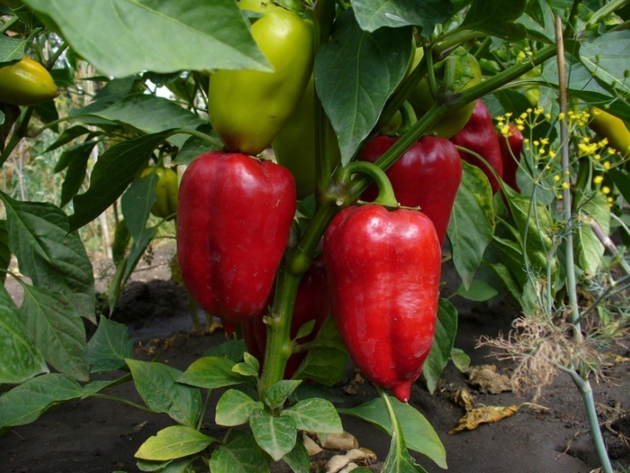
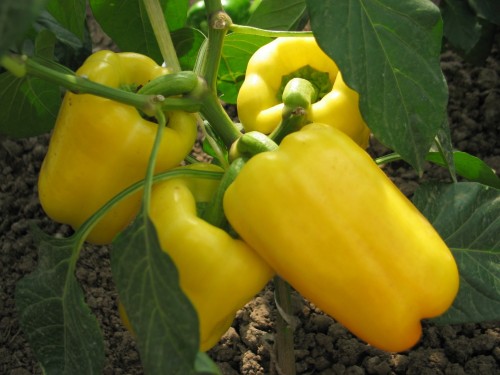
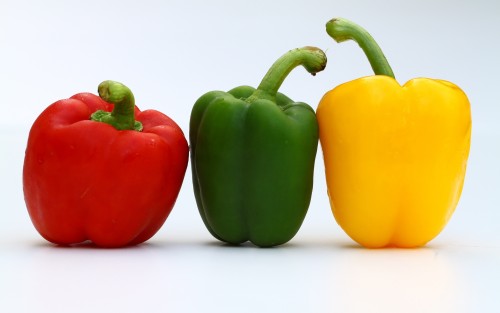
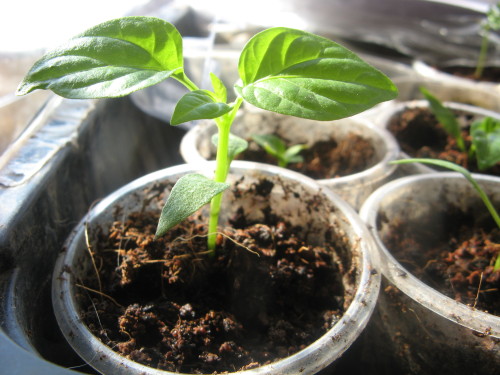
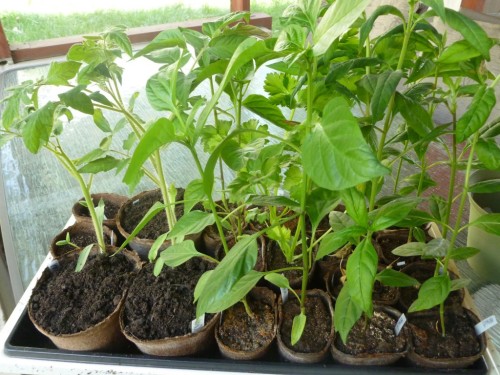

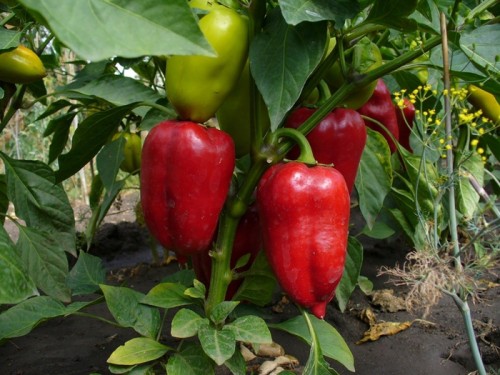












 Start a discussion ...
Start a discussion ...